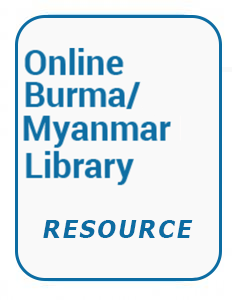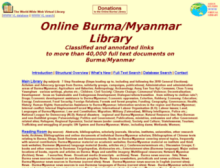Resource information
... In February 2011 media outlets worldwide reported that China had surpassed Thailand as the largest foreign investor in Myanmar.1 China had US$8.25 billion of approved investment in fiscal year 2010–11 (which in Myanmar runs April to March), all for projects in the extractive and power sectors. It was the biggest investor in Myanmar’s FY2010–11 Foreign Direct Investment (FDI) windfall of almost $20 billion — more than the previous twenty years combined.2 This was just slightly higher than Vietnam’s approved investments for the corresponding fiscal year, which totalled $19.9 billion.3 Yet the 2010–11 FDI figures exemplified a decade long trend of investment being overwhelmingly concentrated in the extractive (mining and oil and gas) and power sectors. Only 1 per cent of the FDI from FY2010–11 was outside these sectors, evidence that foreign investors saw few other viable investment opportunities in Myanmar’s challenging business climate. The majority of these investments came from neighbouring countries, most notably China, but also Thailand and South Korea. This is partly the result of Beijing’s often overstated but still sizable influence in Naypyidaw, as well
as its desire to secure natural resources from abroad and bypass the strategic chokepoint that is the Straits of Malacca.4 But the source of Myanmar’s FDI is also shaped by other factors, including different home country investment patterns. China, for example, is historically a major investor in resource projects. Singapore and Japan tend to invest more in sectors such as real estate and manufacturing, yet because these projects were less viable in Myanmar for the last decade, investors from these countries have often turned elsewhere. Despite oft-cited competition for resource investment in Myanmar, India’s actual investment in the country has been miniscule, though Indian investors have in recent years spent approximately 80 per cent of their FDI on mergers and acquisitions, which are rare in Myanmar.
The concentration of FDI has important implications for Myanmar’s economic development, as contrary to common perceptions FDI is not inherently or uniformly beneficial for a host country. Instead, the positives vary depending on the source and sector of investments, the forward and backward linkages they create with other parts of the economy, the number and types of jobs created, and the host country’s economic policies. Most of the FDI that has come into Myanmar in the last decade has created little direct employment and few linkages with existing industries, limiting their positive benefits. Despite this, FDI is still rightly viewed as an important part of Myanmar’s economic development.
This paper reviews changes in the source country and economic sector of FDI in Myanmar using actual and approved investment data from 1989 until 2011. The data has been disaggregated by country, sector, and for select years both. It looks at FDI in two periods: the first from the passage of the Foreign Investment Law in November 1988 to the end of FY1999–2000, and the second from FY2000–01 to the present. This division was selected because it falls at the end of a decade, during a lull in both approved and actual investment (after most of the projects approved before the 1997–98 Asian Financial Crisis had been fulfilled), and around the time when the changing trends in Myanmar’s FDI were first becoming evident. The paper starts by noting some caveats of FDI figures in Myanmar. It then reviews recent literature on FDI in Myanmar, before examining the major trends in the country’s investment data. The next section compares these trends with those of Myanmar’s neighbours, Vietnam and Laos. The paper then engages with the theoretical literature on FDI to explore what these investment patterns reveal about the macro economy, and how they are shaped by geopolitics, sanctions, commercial concerns and the specific investment patterns of each home country. The paper closes with a brief examination of whether these FDI projects can contribute to broad-based economic development in Myanmar...


